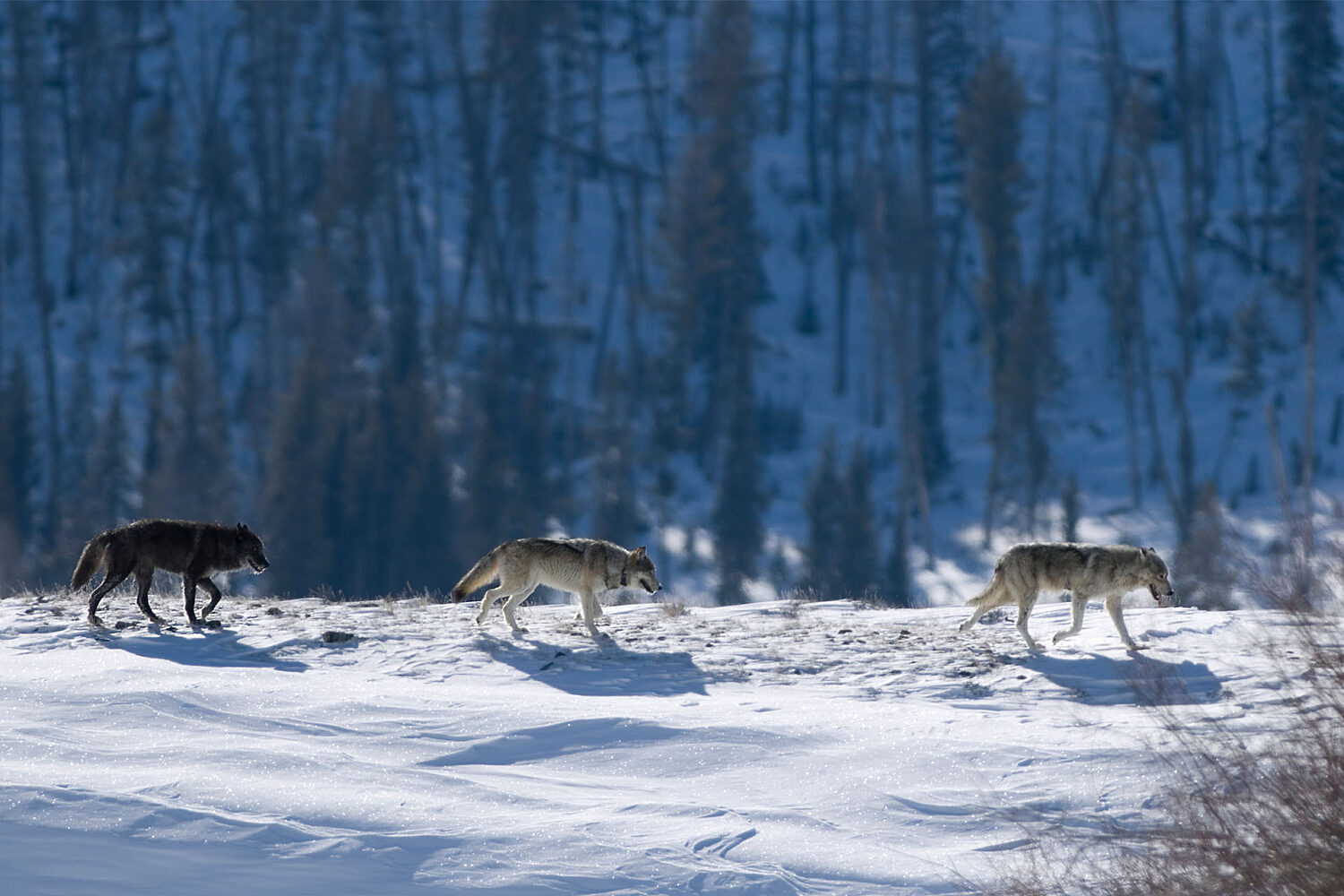
Understanding the Challenges with Wildlife Management
04/05/2023
There’s a lot of controversy out there surrounding wolves in Montana, and it can be hard to know exactly what’s going on where there are so many different variables at play. So if you’ve heard a little about the state of wolves in Montana but you’re not quite sure what the deal is, buckle up. Let’s unpack some of the challenges facing land managers, wildlife biologists, and ranchers in the state and take a look at one of the most polarizing issues under the Big Sky.
Wolf reintroduction in Montana
Wolves have a long and difficult history in Montana. According to the National Park Service, since white settlers began to move from east to west across the continent in the 1800s, everything has changed for wolves and many other animals. As white settlers arrived, they impacted the availability of prey for wolves by overhunting their food sources. And because of that, wolves had no option left but to go after livestock. In order to protect their herds and think that they would also protect valuable prey animals like deer and elk, land managers, farmers, and ranchers eliminated wolves in Montana.
But removing a key predator from an ecosystem didn’t have the desired effect. Wolves help strengthen deer, elk, and other ungulate populations by taking out the weak individuals in a herd. And the removal of wolves caused many problems, including severe overgrazing in Yellowstone that led to problems for many animals in the food chain. Eventually, gray wolves made it back into northwest Montana on their own, migrating into Glacier from Canada. And beginning in 1994, wildlife biologists captured gray wolves in Canada—the same species that used to roam Montana—and reintroduced them into Yellowstone.

In 2011, wolves were finally delisted and are no longer considered endangered. That opened them up for hunting again in Montana. Today, wolf management is a balancing act between local concerns, wolf population health, and the health of the ecosystem as a whole.
Concerns for ranchers
Many ranchers are still worried about wolves harming their livestock. The thinking is that if there are too many wolves around and not enough ungulates to eat, the wolves turn to easy pickings like calves and lambs, impacting ranchers’ livelihoods. Based on the available data from FWP, “Wildlife Services confirmed that, statewide, 67 cattle, 29 sheep, and 3 livestock guard dogs were killed by wolves during 2021.”
But ranchers are clever, using strategies like putting up lines of flagging, drive-over electric mats, and electric fencing to deter wolves and other predators like grizzly bears. And since 2007, the Livestock Loss Board has offered financial compensation to farmers and ranchers who have lost animals because of wolves, bears, or mountain lions.

Hunting wolves in Montana
Since 2011, wolves have been delisted in Montana. Because of that, Montana Fish, Wildlife & Parks has full authority to manage wolves throughout the state. And that means hunters
can harvest a maximum of 20 wolves per season. Landowners have the power to protect their lands, too, and are able to take up to 100 wolves per year if they potentially threaten livestock. And money from license sales goes back into wildlife management and monitoring.
The story of wolves in Montana is a complicated one, with emotions running high on all sides. Wolves still have a lot of bad PR, misinformation, and distrust against them in many communities. But a way forward exists at the intersection of support for commercial agriculture and data-driven wildlife management. And if that can happen anywhere, it’s in Montana.
